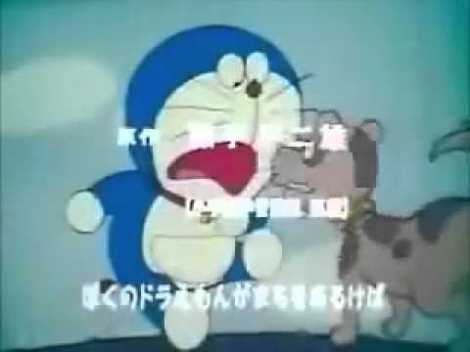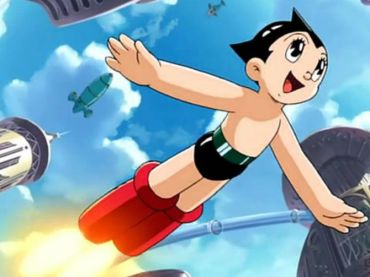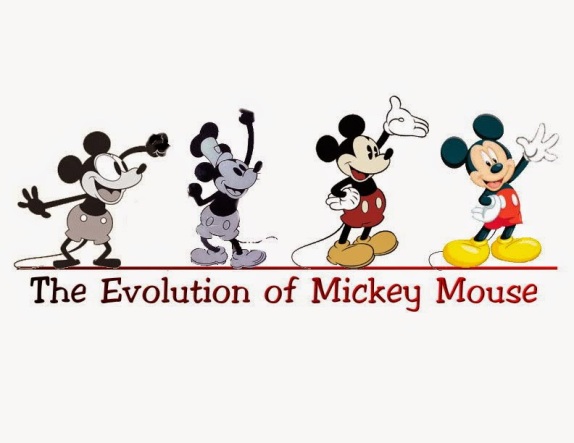25 years ago, there came a phenomenon called “Japanese comics”, or “manga”, all started with “Doraemon”. (For the first time,) Vietnamese people were introduced to the modern kind of comics printed as the form of a book, which differentiates the traditional comics, which were stories with pictorial illustration printed on magazines and teen newspapers.
My mom told me not to read too much or to like comics when I was little.
14 years ago, I read that a modern comic for the first time, but it’s not until now that I see why it was a phenomenon. Never have I been a fan of comics, but I couldn’t resist the attractiveness of the series.
I started with the 1973 version. I’m not sure it was me not finding the right ones or it is really like that, only pictures with subtitles, like you’re reading coloured manga without having to turn the page.
So I continued with the 1975 version. For both versions, I could easily point out that they only animated the manga: there’s a group of friends of five, including our cutie chubby robotic cat Doraemon with his friend, dumb lazy third grade boy Nobita as the main protagonists, pretty Shizuka who is Nobita’s crush as another protagonist, short and arrogant but smart Suneo and bully Takeshi Goda aka Jaian (Giant) as the two antagonists.
For both of the versions, it is quite clear to see the difference in character design, comparing to the design I was used to:

1973 Doraemon is taller and bigger head and body size, longer limbs and smaller eyes and quite long whiskers. (source: Internet)

1979 Doraemon has been made smaller in body size but bigger in eye size and his limbs went shorter, which I think made him look so much cuter and more elegant (and less creepy, too). (source: FANDOM by wikia)

EnterAnd this is the design I’m used to. Characters are in fit shape, big eyes and chubby face. This kind of character design is very popular in designing child characters in children comics/ manga and cartoons/ anime (source: Internet)

for example, Astro boy. (source: CNET)
Same thing applied to other characters of the series. This change in character design reminds me of Mickey Mouse. Both are the symbols of childhood, both are loved by people of all ages, and both are very old, or at least, old enough to go through a multi-stage evolution. For both characters, I can tell without thinking that the closest looks are always the most good looking ones. Though Mickey has change so much more dramatic, the similar in their transformation is definitely at the eyes: they get bigger and bigger. This may due to social trend in the notion of beauty: big round eyes are cuter and bring about the sense of comfort. This is specifically true in the Far East pop culture, especially in Japan: (pretty) manga and anime characters usually have big, round and sparkling eyes. In everyday life, people prefer big round eyes, which is the reason for the explosion of the circle contact lens market and double eyelid surgery in the Orient.

source: sTOON-age
A series of film or comics that has repetitive plots may no longer be welcomed after a while. Doraemon, with repetitive plots over 1780 episodes, which used the exact same plot as the manga, still be loved after decades. All of the stories of the anime and manga series have a constant formula: Nobita gets himself in a trouble unintentionally at school or at home, due to his stupidity and carelessness, and then he comes to Doraemon for help. Mostly, every time, we’ll have a new gadget introduced. He then uses the gadget(s) to help improve the situation but things turns wrong when it seems to work (yes, because he tend to misuse them). Finally, Doraemon has to put himself forward to solve the mess Nobita makes, and Nobita learns a lesson. However, Nobita seems to forget the lesson immediately and he repeat it again and again, which is why we have almost 2000 chapters/ episodes. All the stories happened in certain places: school, home or play ground. There are not many new characters and they also don’t appear much. So what makes repetitive stories in repetitive locations with a certain number of characters be popular for so long and be loved my generations after generations?
Let’s not talk about the unpopularity of the series in Western countries. In Asia, you may get surprise reaction if you say you never read Doraemon during your childhood (trust me, it happened to me when I was 7). All the stories are very real, from plot to location. It is something every child can relate, from Nobita being bullied to him getting bad grades and trying to hide it from mommy. There’s always a Nobita inside (almost) every child, who is lazy, independent and greedy, dreaming of a solution falling from the sky, someone who is afraid of mom knowing his bad grades. Same to locations, which are very familiar, very “everyday”. These are the locations that I can never get bored of, or at least, I have no choice, as a child. My childhood was pretty “typical”: I had a similar group of friends, when I wasn’t not at school, I’d be at home and play at the same kind of playground. I guess that’s why I can never get bored of the series. And finally, it is the stuffs inside Doraemon’s pocket: gadgets. Yes, they are the solutions falling from the sky that every child wishes. But it also reflects the expectation of people in human ability and the rich imagination of a human brain. Children are fascinated with wide imagination and Doraemon appeared not only as the saviour for the thirst of imagination but also a real fantasy every child can empathise.

Memory bread, the gadget I wish for my whole life
- Ikezoe, Y 2013, “Behind the trend of huge eyes and Japanese Anime”, JAPANsociology, Dec 25, available at <https://japansociology.com/2013/12/25/behind-the-trend-of-huge-eyes-in-japanese-anime/>
- Lah, K 2011, “Plastic surgery boom as Asians seek western look”, CNN, May 24, available at <http://edition.cnn.com/2011/WORLD/asiapcf/05/19/korea.beauty/index.html>

Reblogged this on Digital Asia.
LikeLike